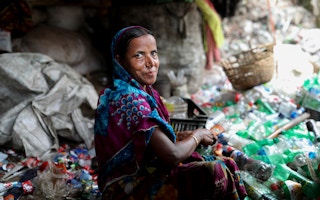The report, entitled, Neglected: Environmental Justice Impacts of Plastic Pollution, was produced by the UN Environment Programme (UNEP) together with the grassroots environmental group, Azul.
The findings aim to empower communities affected by plastic waste and advocate for their inclusion in local decision making.
Environmental injustice
“Environmental justice means educating those on the frontlines of plastic pollution about its risks, including them in decisions about its production, use, and disposal, and ensuring their access to a credible judicial system”, said Inger Andersen, UNEP Executive Director.
The report showcases how environmental injustices are linked to plastic production, in areas such as deforestation for road building, the displacement of indigenous peoples to conduct oil drilling, as well as contamination of potable water by fracking operations to extract natural gas, in countries such as the United States and Sudan.
Moreover, the report warns of health problems among African-American communities living near oil refineries in the Gulf of Mexico, and the occupational risks faced by some two million waste pickers in India.











